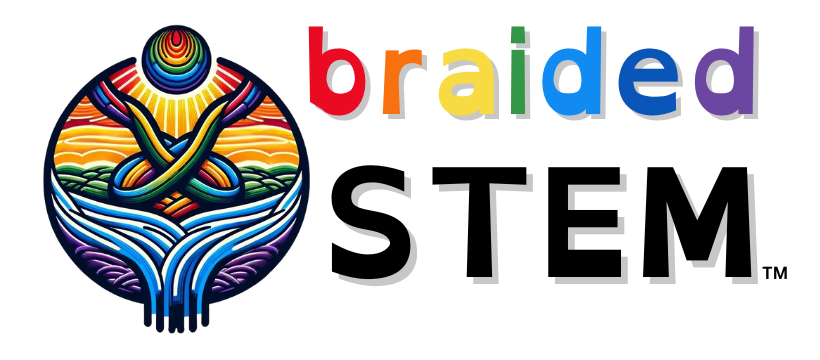Binary #MicDropMath (#MicDropCS) Lessons
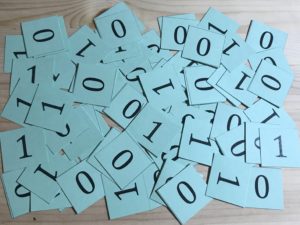 This series of lessons is designed to take students’ understanding of the binary number system way beyond the well known fact that it uses zeroes and ones.
This series of lessons is designed to take students’ understanding of the binary number system way beyond the well known fact that it uses zeroes and ones.
While each lesson can be used on its own or in different orders and combinations depending on your learning objectives, it is recommended they are used in the order given here:
• Binary #MicDropMath Patterns
• Binary #MicDropMath Build Your Own Cards
• Binary #MicDropMath Multiply This
• Human Computers – Creative Message Communication
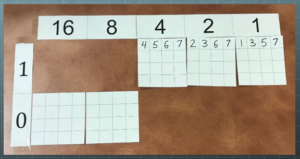
Binary #MicDropMath Build Your Own Cards
This lesson will demonstrate to students how to make the binary #MicDropMath cards. A common question when engaging students with the Binary #MicDropMath is: “Why are those numbers on the cards?” In this lesson, they ...
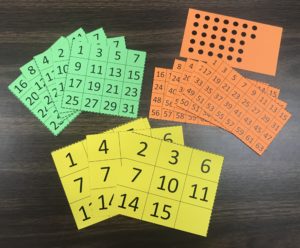
Binary #MicDropMath Cards
There are five versions of the Binary #MicDropMath Cards below. To perform the Binary #MicDropMath, print out page one of the binary number cards. (NOTE: You only need to print these double-sided to include page ...
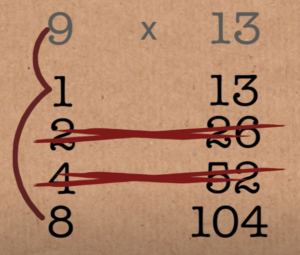
Binary #MicDropMath Multiply This
The following lesson engages students to explore exceptionally old algorithms used by Russian and Egyptian people to multiply two numbers together. It turns out these two algorithms are connected to the binary number system, which ...
Binary #MicDropMath Patterns
The Binary #MicDropMath Patterns lesson can be used to help students recognize patterns, understand how to make multiple hypotheses in science and math, and understand the importance of basing claims on more data rather than ...
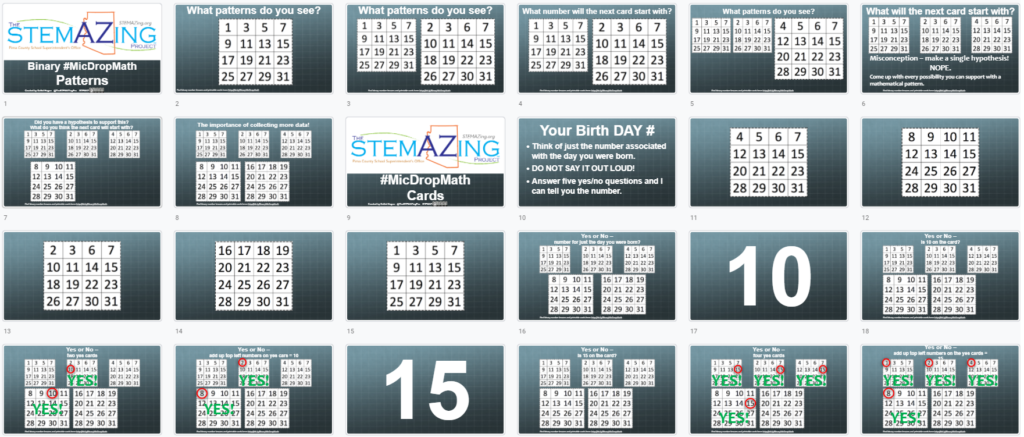
Binary to Parity and ASCII – Google Slides for #MicDropMath
Google Slide Deck for all the #MicDropMath Lessons - patterns, cards, parity, error detection, and human computers ...
Human Computers – Creative Message Communication
Believe it or not, there is a five-letter word encoded in the cards shown in the image. Start with lessons on the binary number system. Then, learn how computers use parity bits for error detection ...
